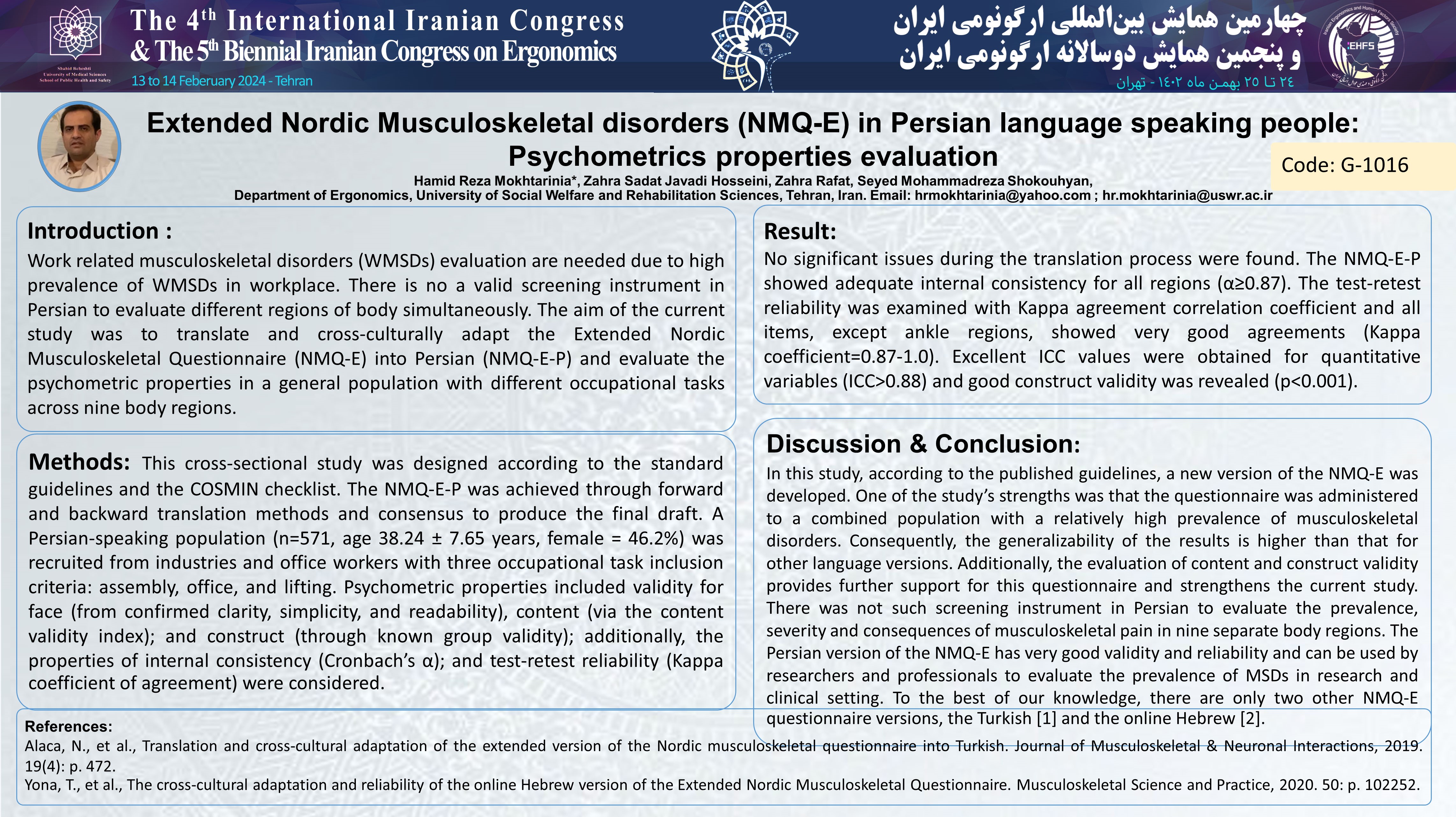Translation, cultural adaptation and assessment of Psychometrics properties of the Extended Nordic Musculoskeletal disorders (NMQ-E) in Persian language speaking people
کد: G-1016
نویسندگان: Hamid Reza Mokhtarinia © ℗, Zahra Sadat Javadi Hosseini, Seyed Mohammadreza Shokouhyan, Charles Philip Gabel
زمان بندی: زمان بندی نشده!
دانلود: دانلود پوستر
خلاصه مقاله:
مقدمه
To translate and cross-culturally adapt the Extended Nordic Musculoskeletal Questionnaire (NMQ-E) into Persian (NMQ-E-P) and evaluate the psychometrics properties in a general population with different occupational tasks across nine body regions.
مواد و روشها
This cross-sectional study was designed according to the standard guidelines and the COSMIN checklist. The NMQ-E-P was achieved through forward and backward translation methods and consensus to produce the final draft. A Persian speaking population (n=571) was recruited from industries and office workers with three occupational task inclusion criteria: assembly, office, and lifting. Psychometric properties included validity for face (from confirmed clarity, simplicity, and readability), content (via the content validity index); and construct (through known group validity); additionally the properties of internal consistency (Cronbach’s α); and test-retest reliability (Kappa coefficient of agreement) were considered.
یافتهها
No significant issues during the translation process were found. The NMQ-E-P showed adequate internal consistency for all regions (α≥0.87). The test-retest reliability was examined with Kappa agreement correlation coefficient and all items, except ankle regions, showed very good agreements (Kappa coefficient=0.87-1.0). Excellent ICC values were obtained for quantitative variables (ICC0.88) and good construct validity was revealed (p0.001).
نتیجهگیری
The Persian version of the NMQ-E has very good validity and reliability and can be used by researchers and professionals to evaluate the prevalence of MSDs in nine body regions simultaneously
واژگان کلیدی
Musculoskeletal Pain, Cross-cultural adaptation, validation, Physiotherapy, Persian.
دیدگاه ها (0)
ارسال یک دیدگاه
ارسال دیدگاه توسط مدیریت بسته شده است.
